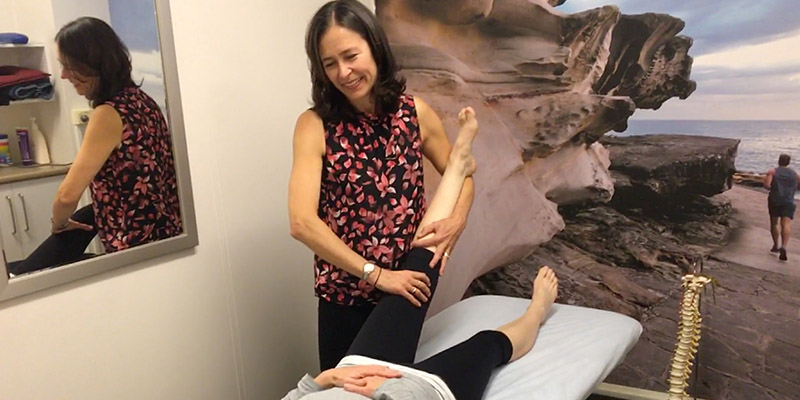Sciatica – Sydney City CBD
Sciatica describes the leg symptoms which occur if the sciatic nerve is irritated or “pinched”. It can cause pain in the back or side of your leg. Sensation might also be affected, causing tingling or numbness in the regions of skin that it gives nerve supply. Another symptom may be weakness of leg muscles, notably the calf or hamstring.

Where and what is the sciatic nerve?
The sciatic nerve is a large nerve that begins in the lower back and travels through the buttock, down the back of the leg all the way to the toes. It provides motor (movement) control and sensory (feeling) control to this region. It is the thickest nerve in the body and is made up of lumbar and sacral nerves, L4, L5, S1, S2 and S3. The sciatic nerve gives nerve supply to all the muscles in the leg apart from the front of the thigh.
Why is my sciatic nerve irritated?
Most commonly there is compression of the nerve in the lower back, and this is due to a disc injury, facet joint arthritis, or other source of pressure. Tightness or spasm of the piriformis muscle in the buttock can also irritate the neighbouring sciatic nerve and cause pain, numbness and tingling along the back of the leg and into the foot. There are other points along the course of the nerve where it may be entrapped and cause symptoms.
Could there be other causes of my leg pain?
Pain or weakness in the region supplied by the sciatic nerve could also be caused by other structures, rather than the nerve. For example, a hamstring strain or calf strain both cause posterior leg pain. Pain from the hip or knee may travel down the leg. Pain can also radiate down the leg from an inflamed joint in the back or sacro-iliac joint – this is not true sciatic pain, but certainly mimics it.
What can be done about Sciatica?
Clearly it is important to determine firstly whether the symptoms are due to irritation of the sciatic nerve. At Macquarie Street Physiotherapy getting to the source of the pain is our first priority. It may be that a scan is warranted, in which case we discuss this with your doctor. If the disc or if the facet joints are responsible, this will guide the type of treatment we offer you. This might include joint mobilisation or rotation, massage or ultrasound. Sometimes traction is helpful in these situations, and is available at Macquarie Street Physiotherapy. We will help guide you regarding appropriate level of activity, and whether or not you need taping or a brace. Core and other exercises may be prescribed.
What can I do to prevent sciatic pain?
If you have never had sciatic pain, the best way to avoid it (like any back condition) is to avoid excessive prolonged sitting, to maintain a healthy weight, to maintain strength and condition throughout the body, and regularly practice core exercises. If you are on the road to recovery, following an episode of sciatica, it is important that all is done to prevent recurrence. This may include specific, targeted exercises, lifting/bending/sitting advice, looking at sporting technique, posture and movement. If you live or work near the Sydney City CBD, the team at Macquarie Street Physiotherapy can help guide you in all aspects of back care for managing your spine into the future.








